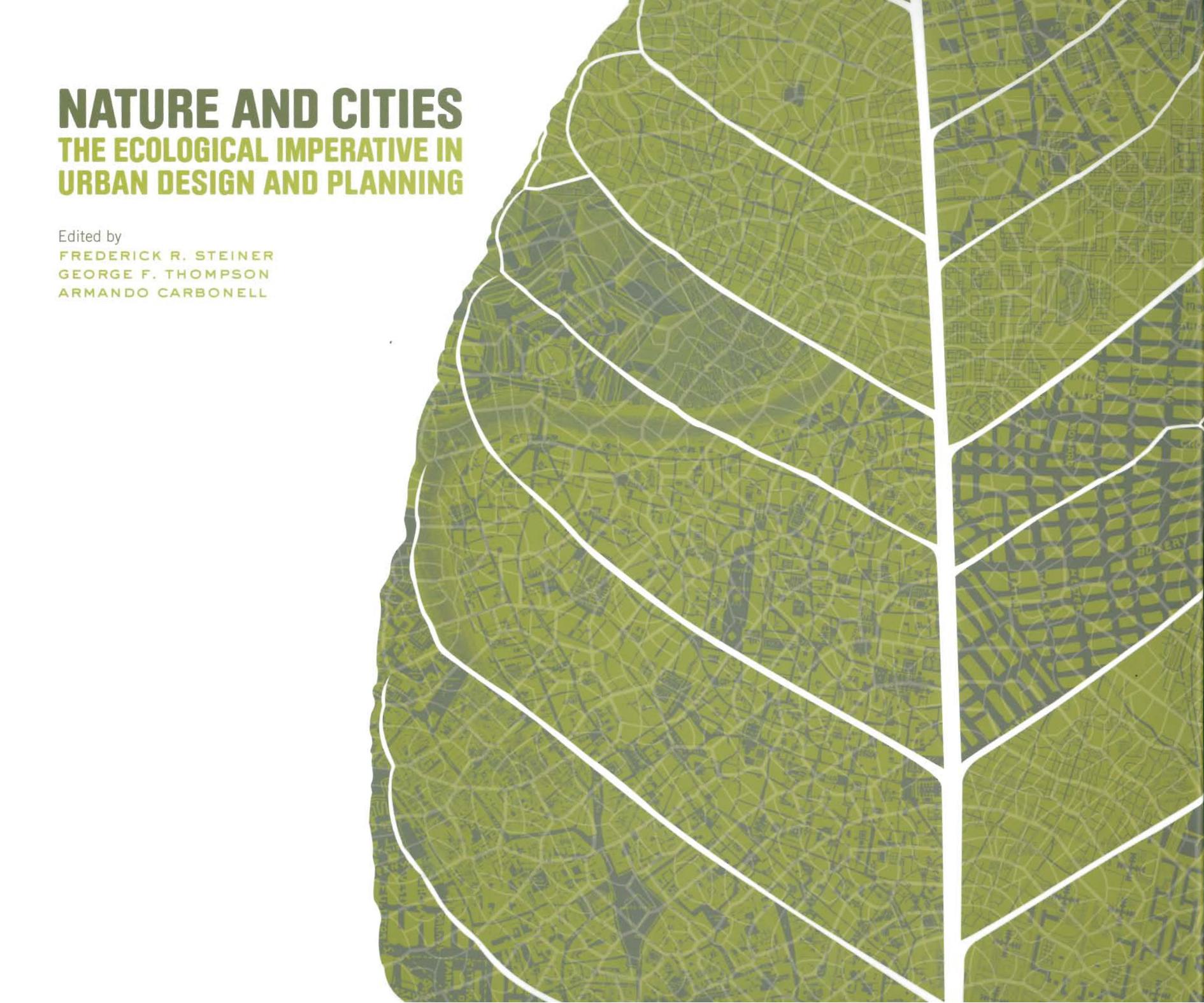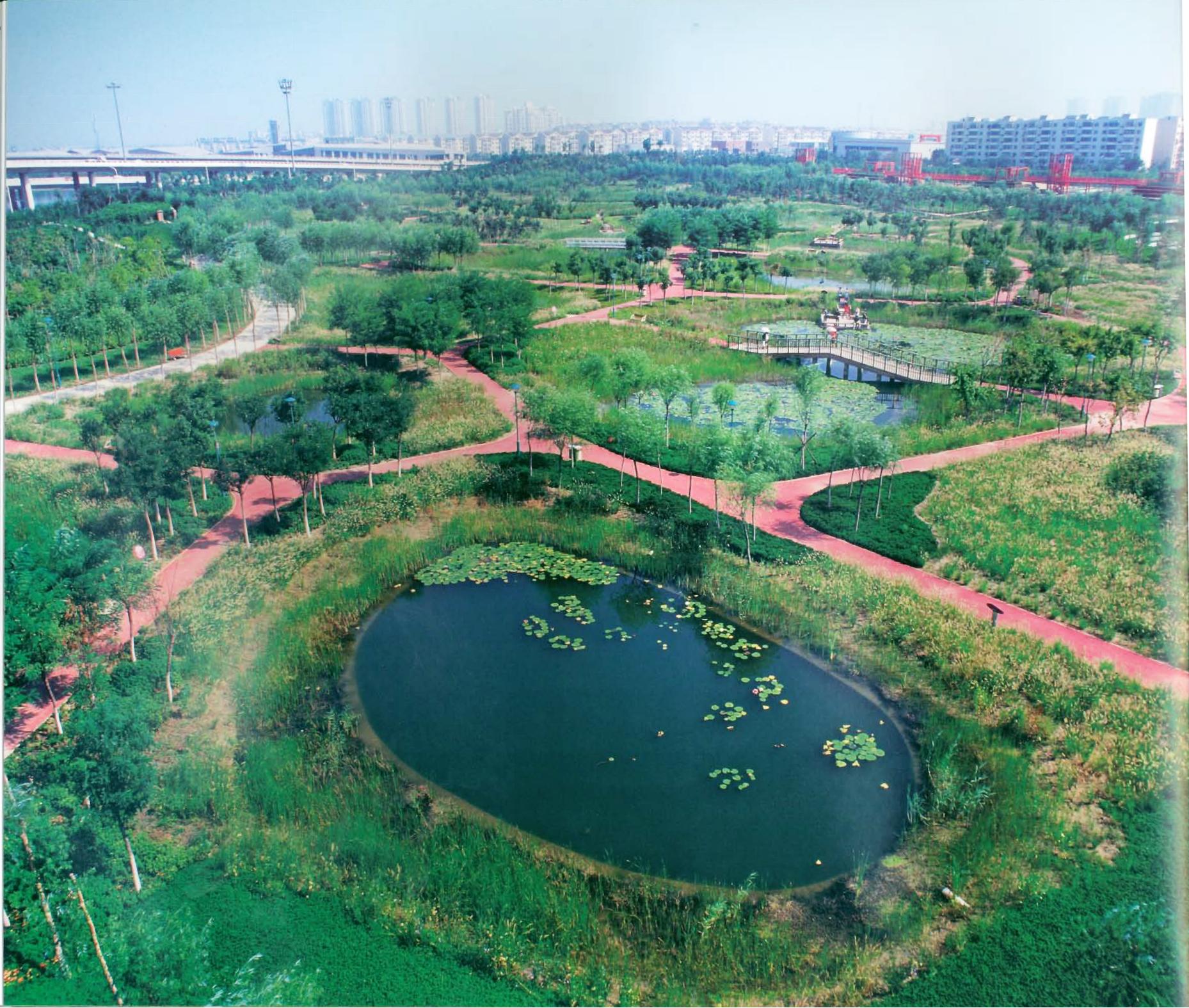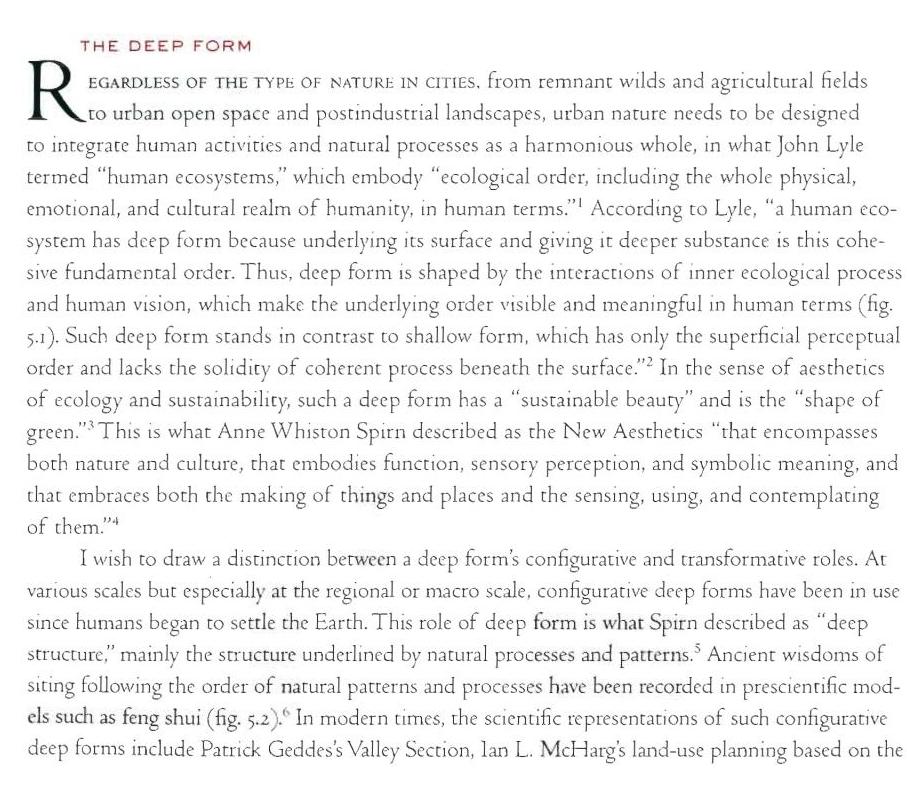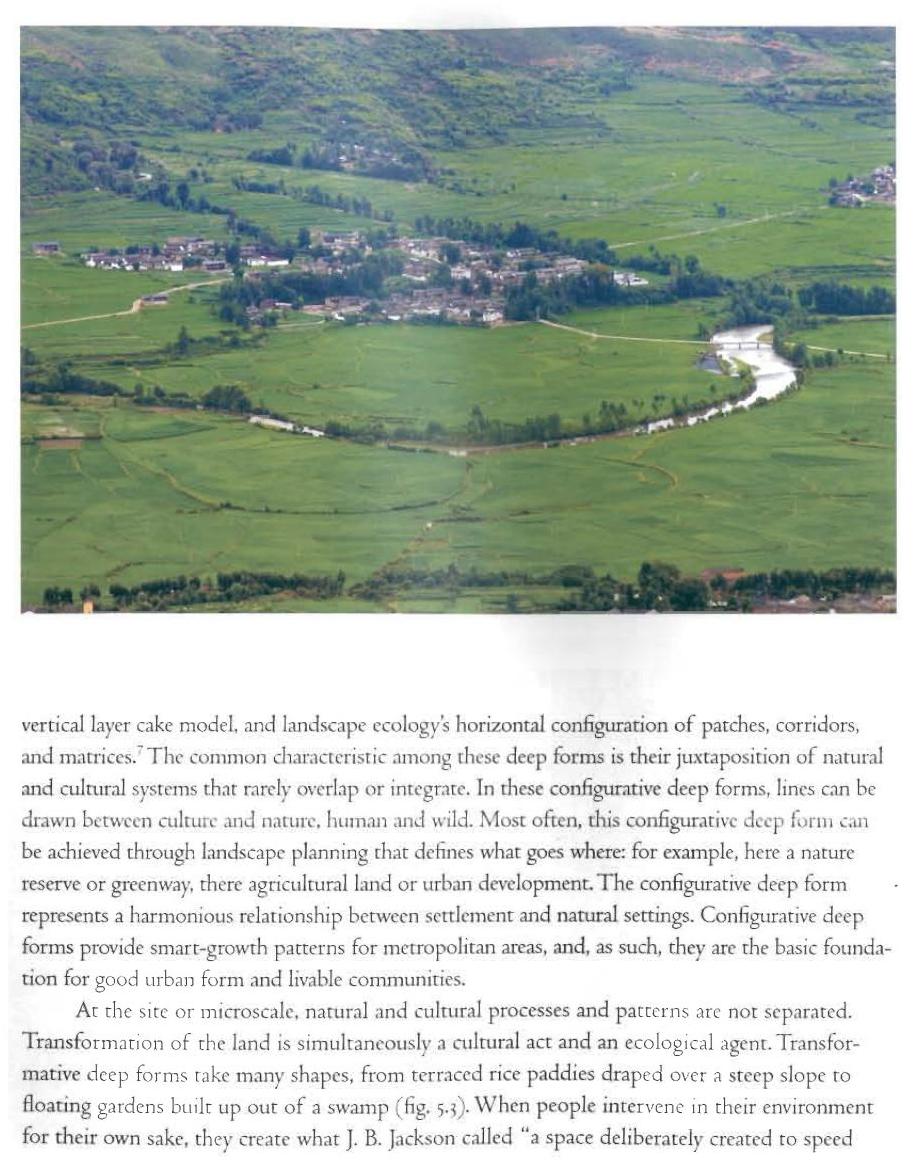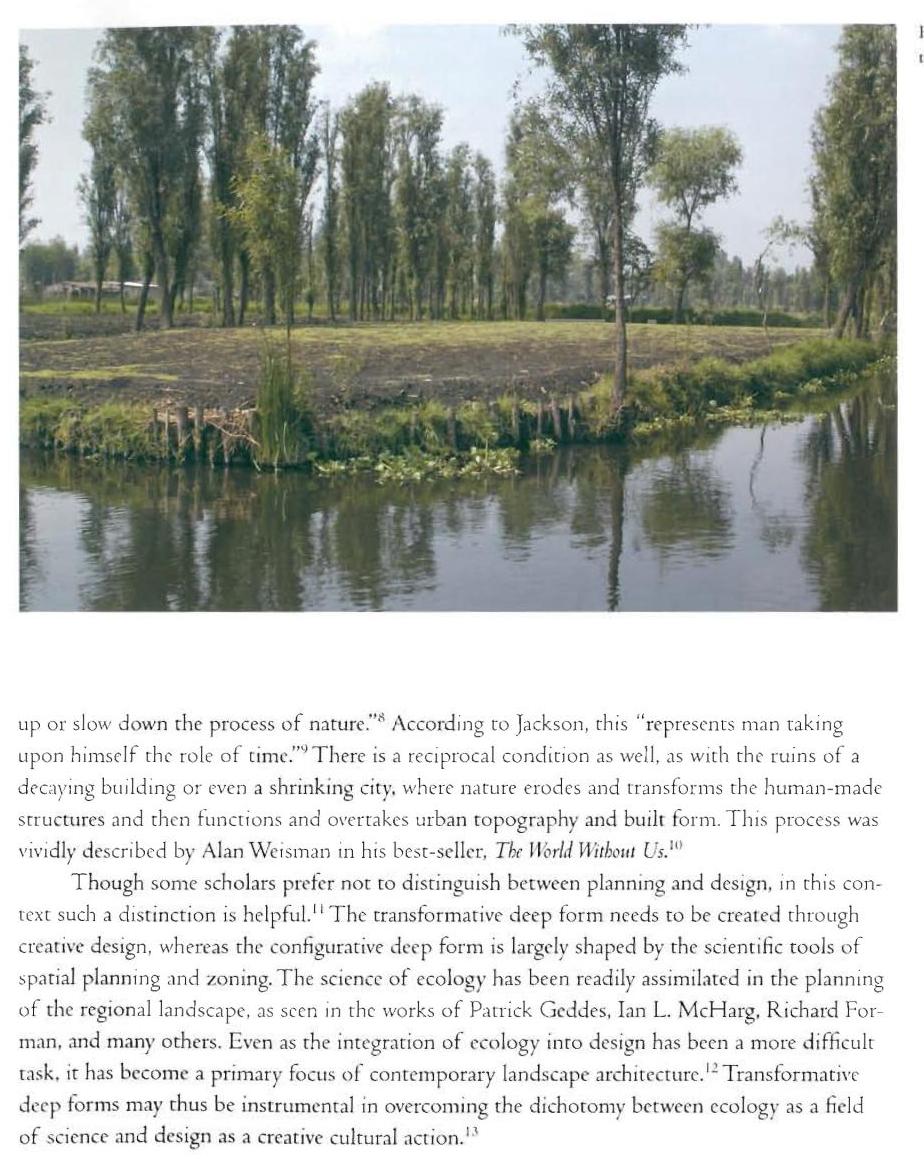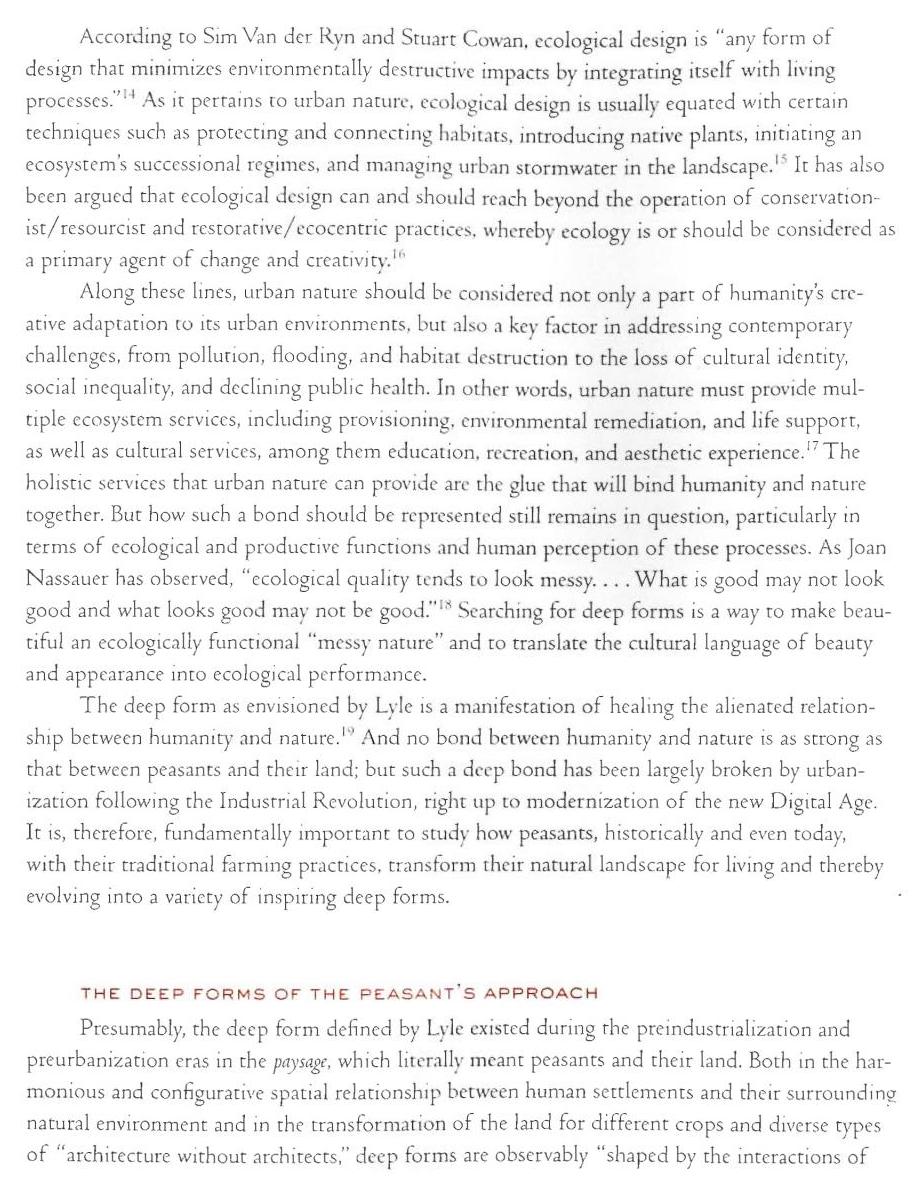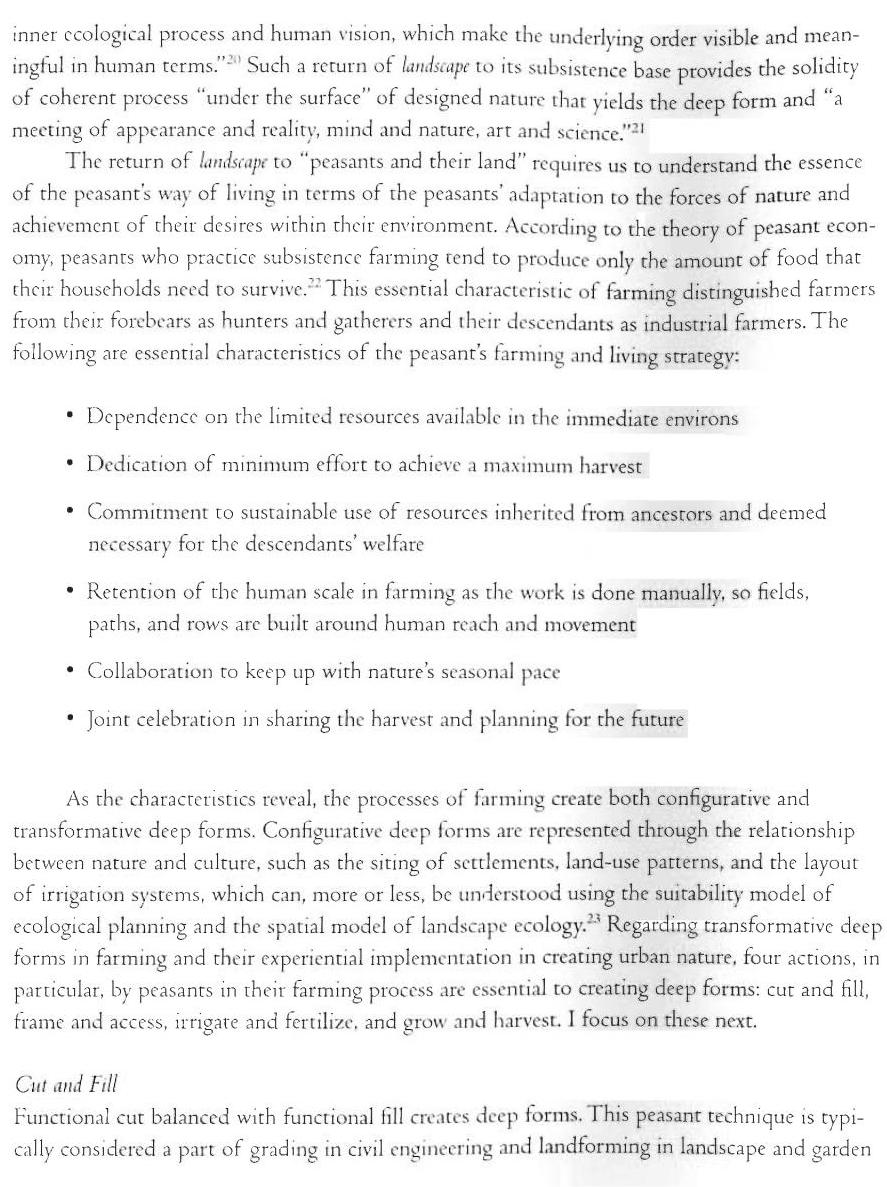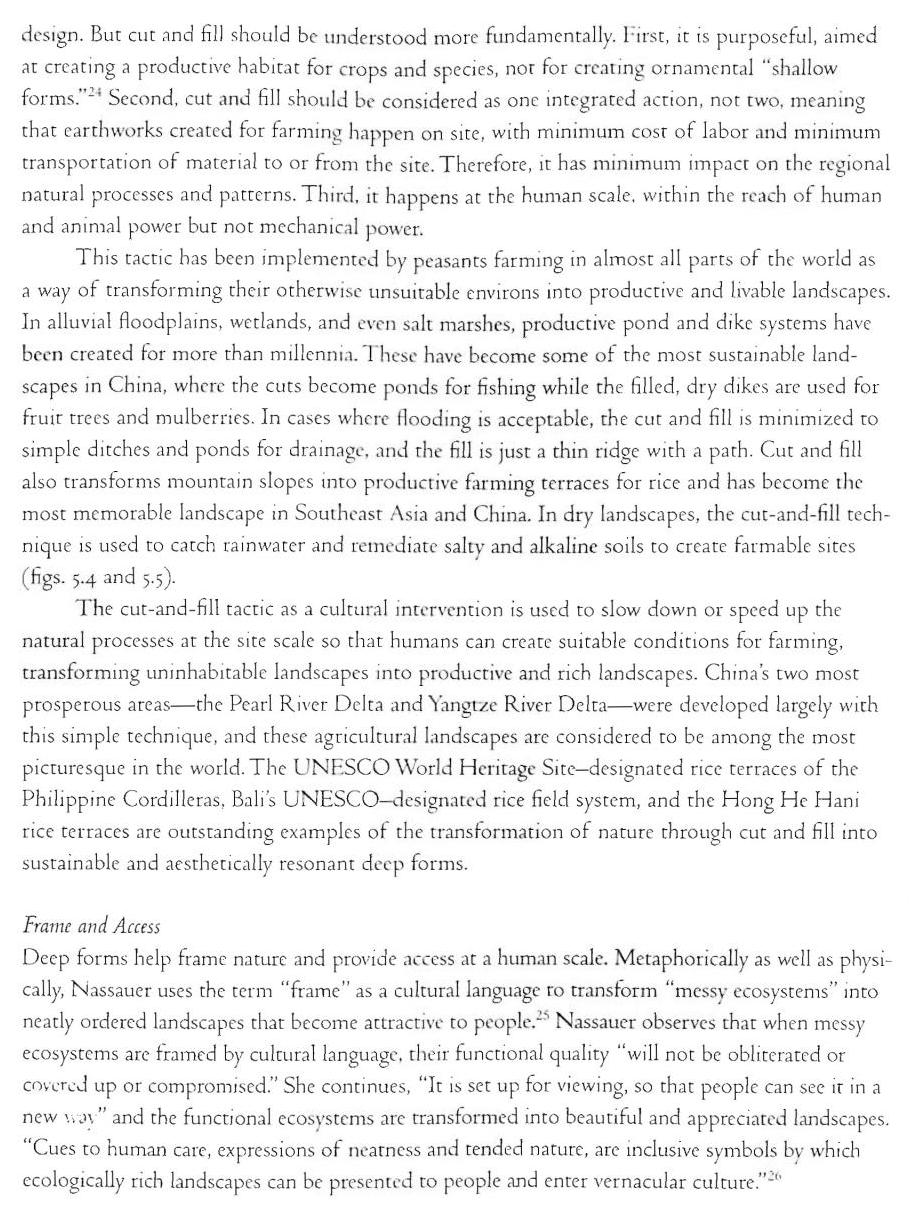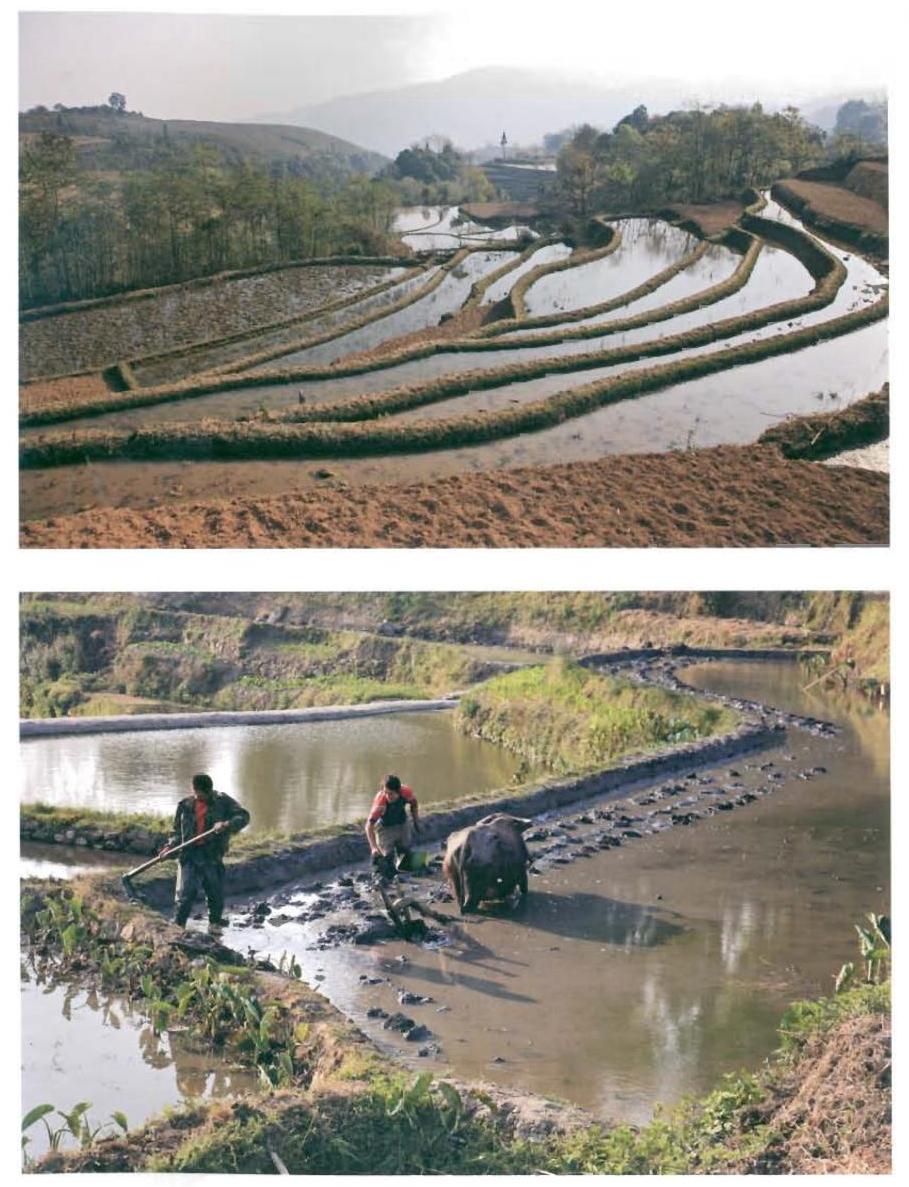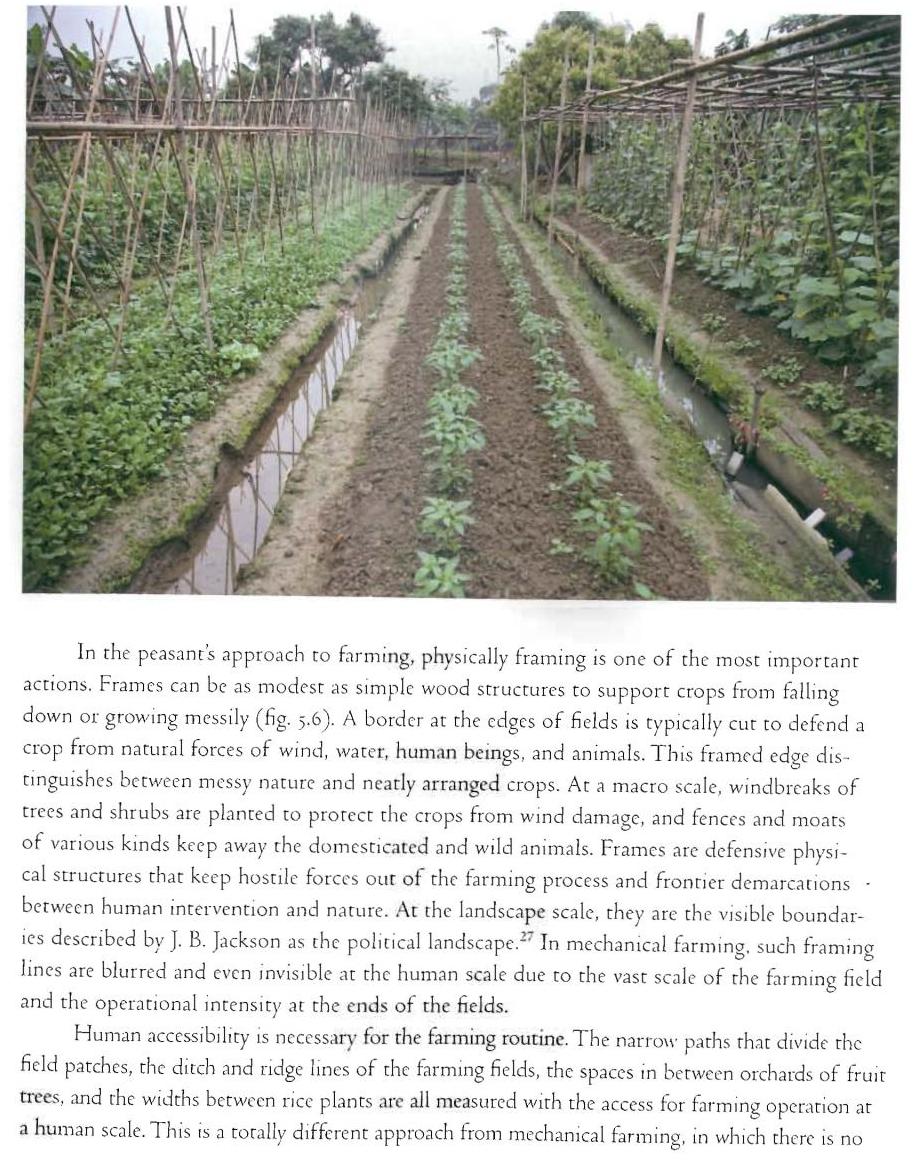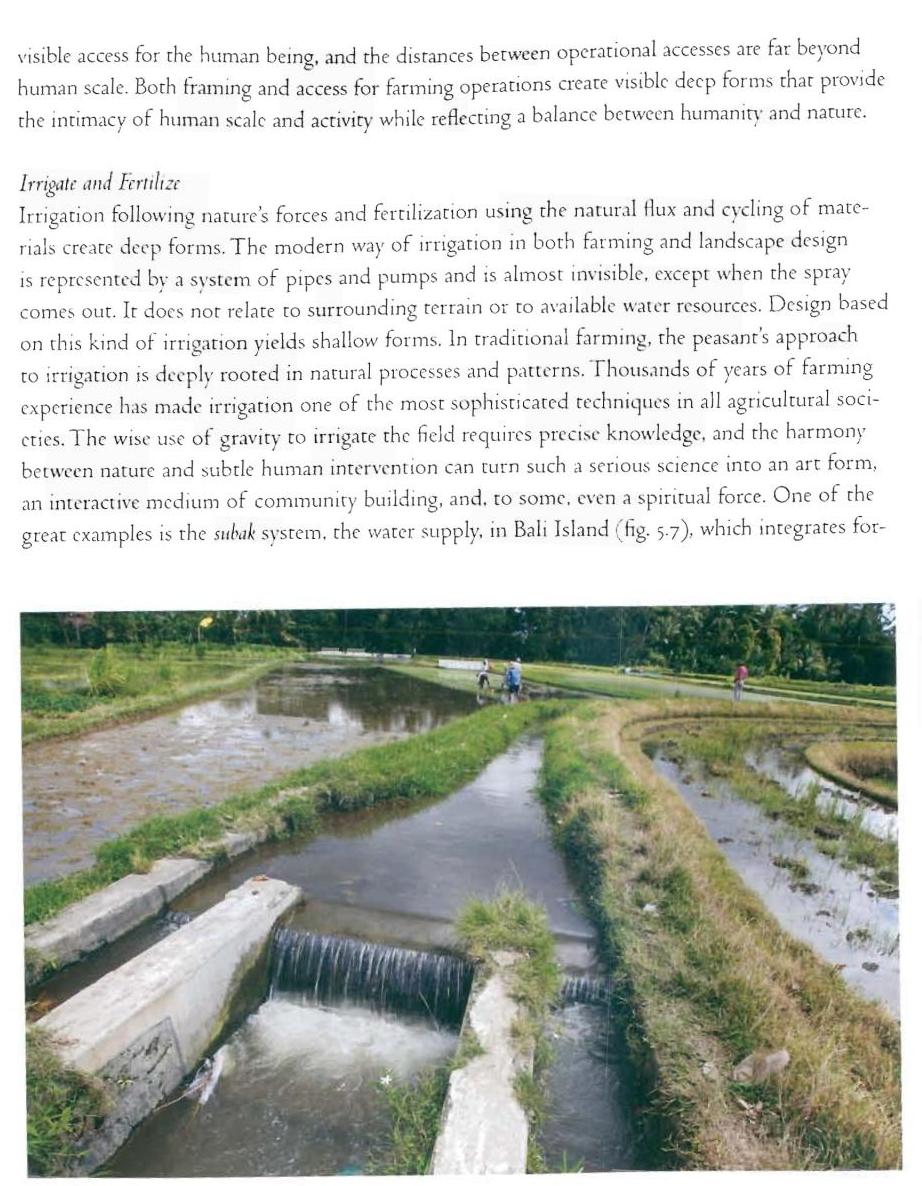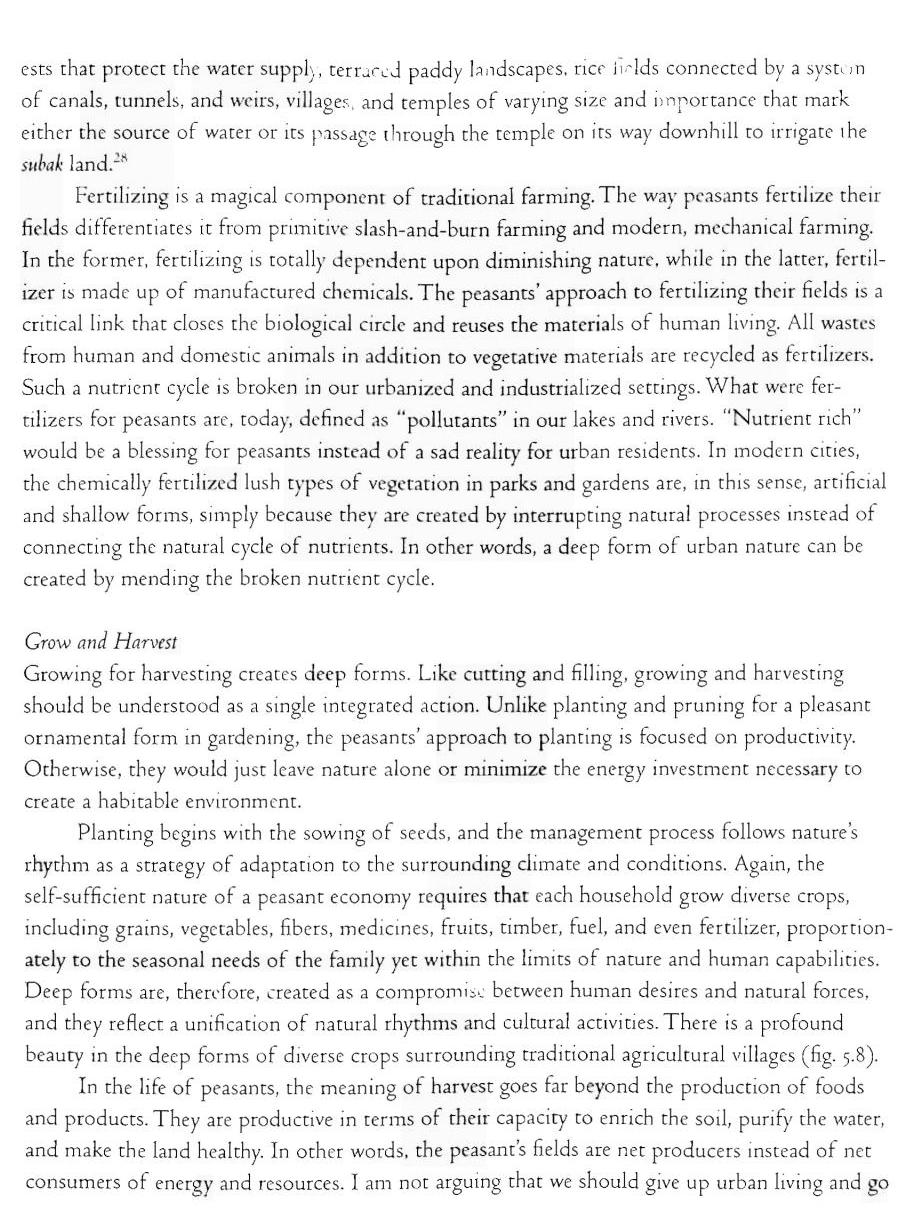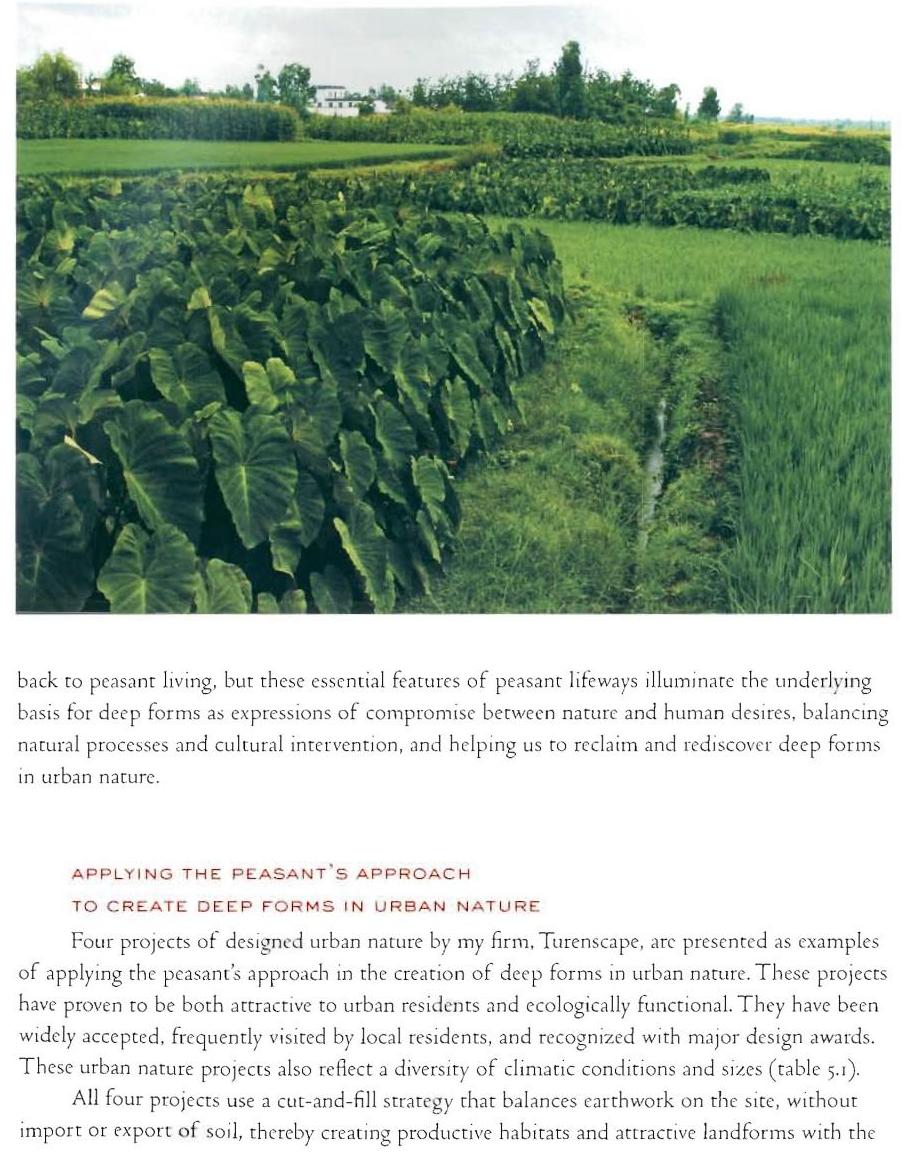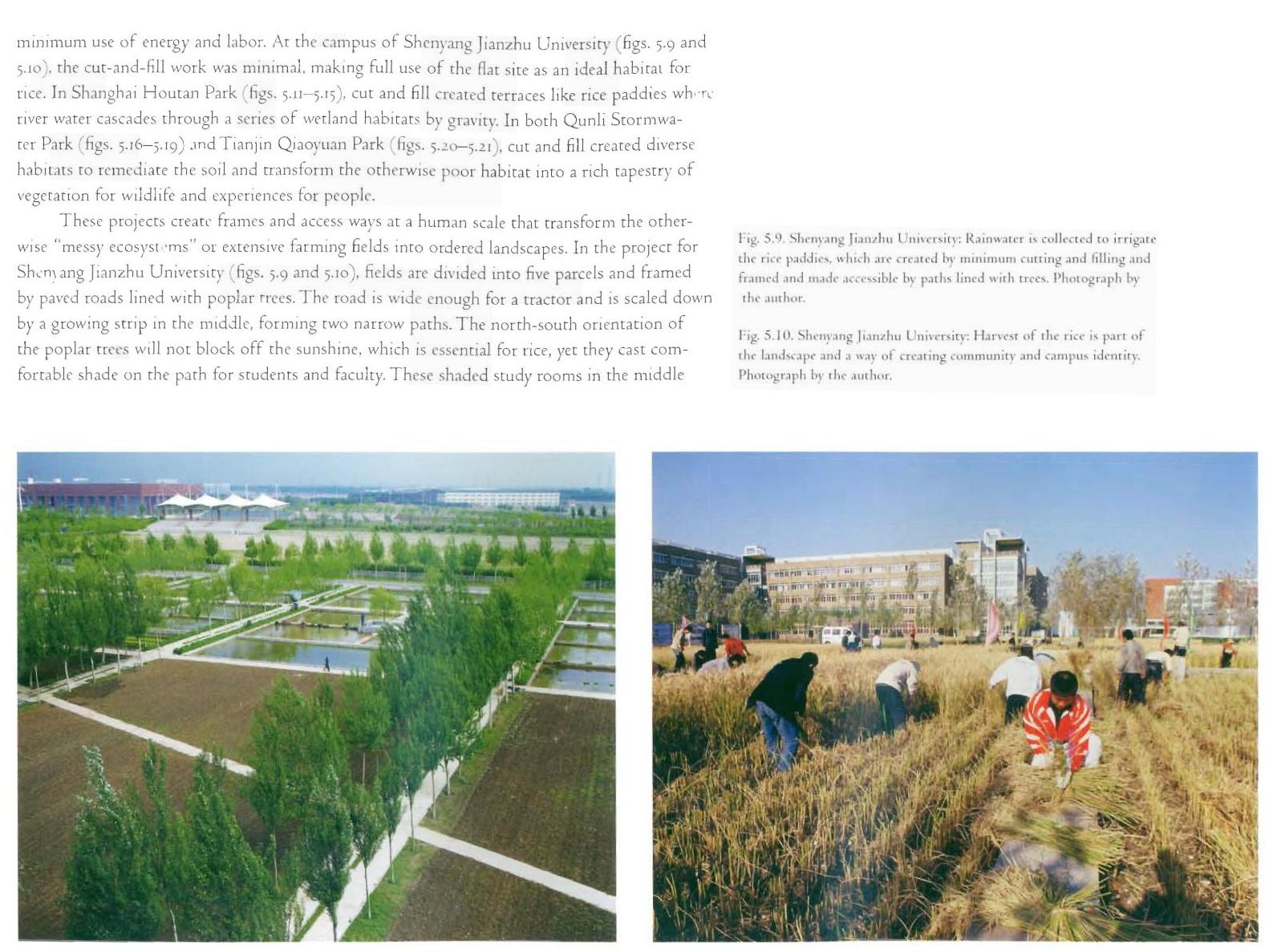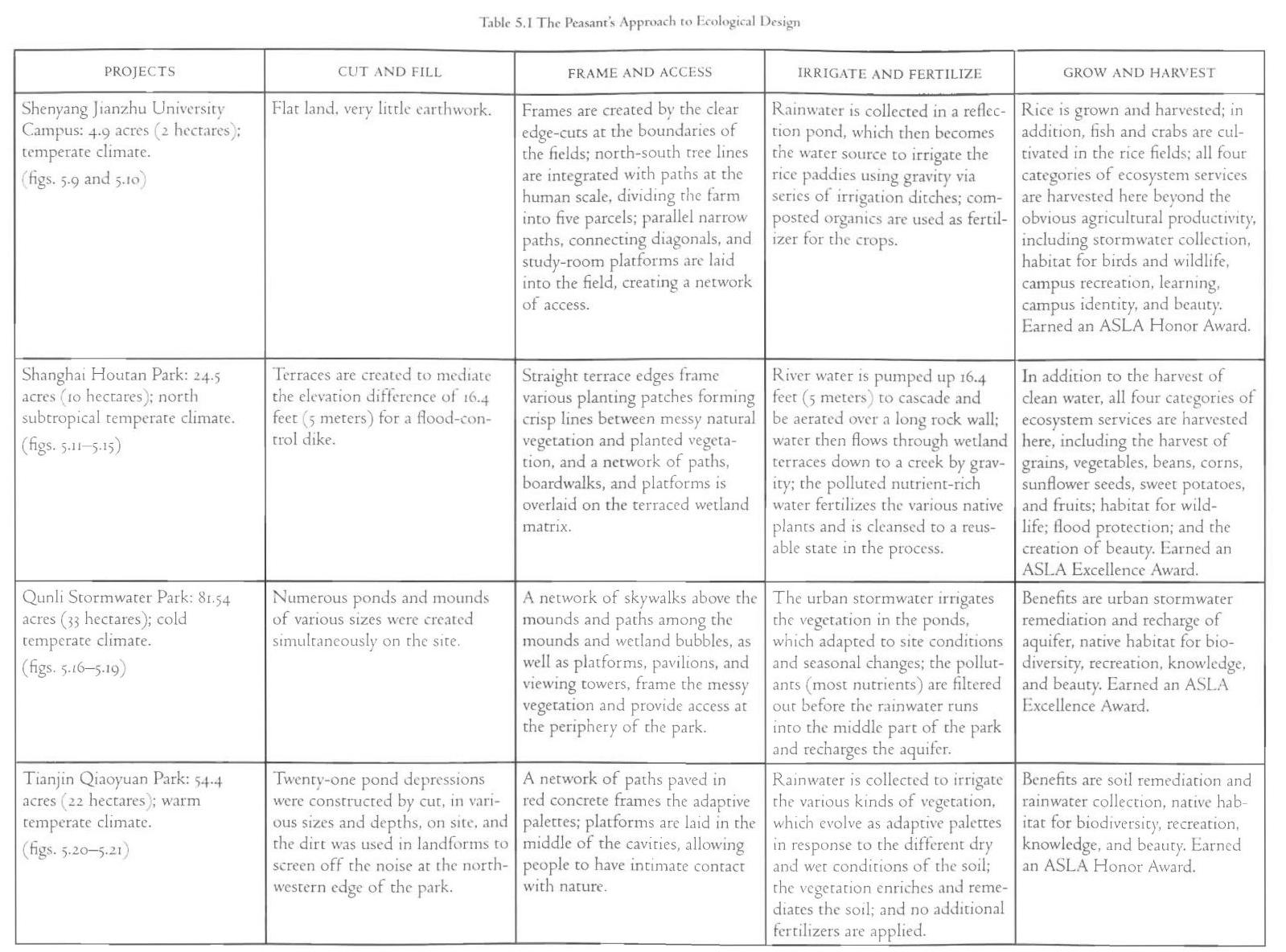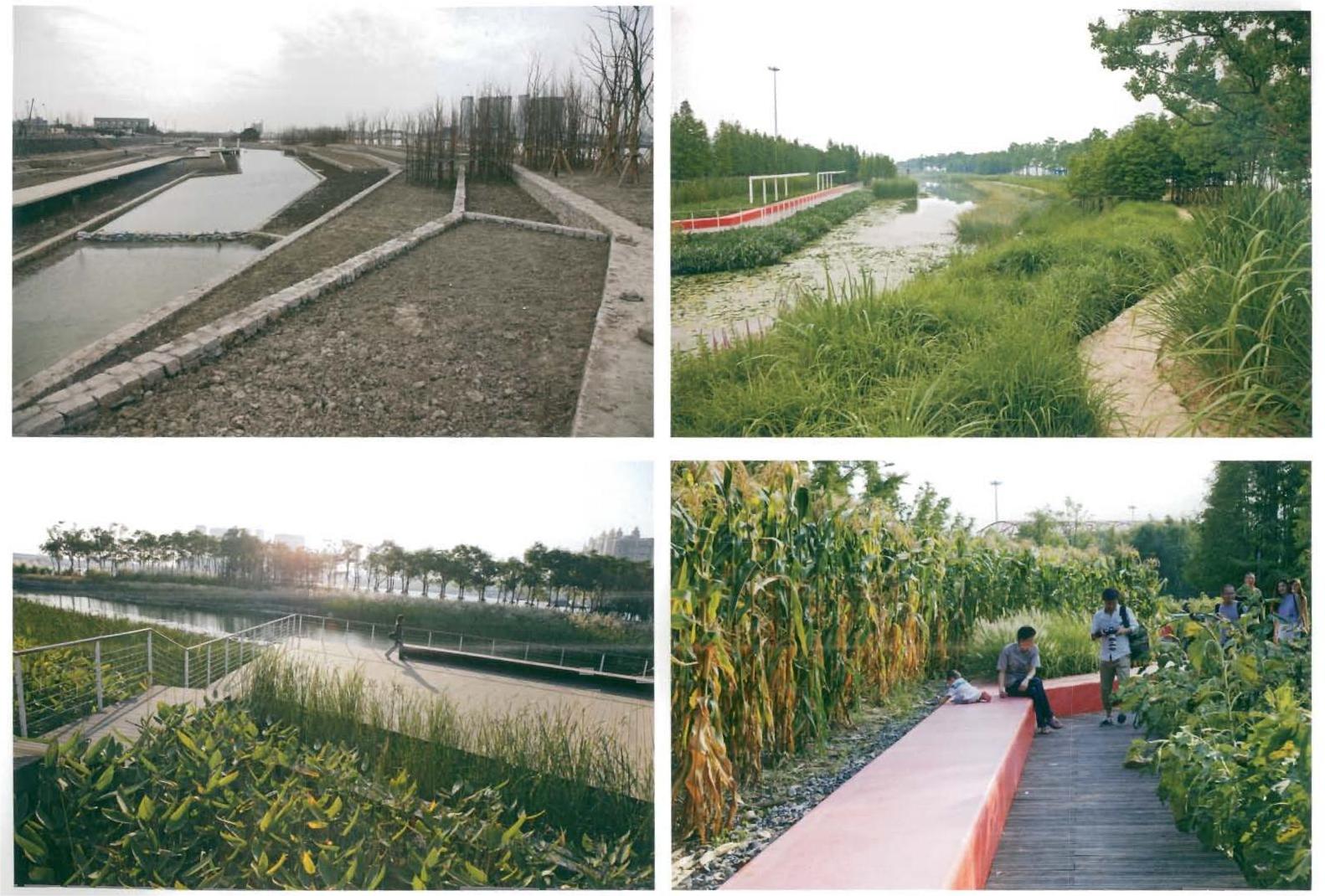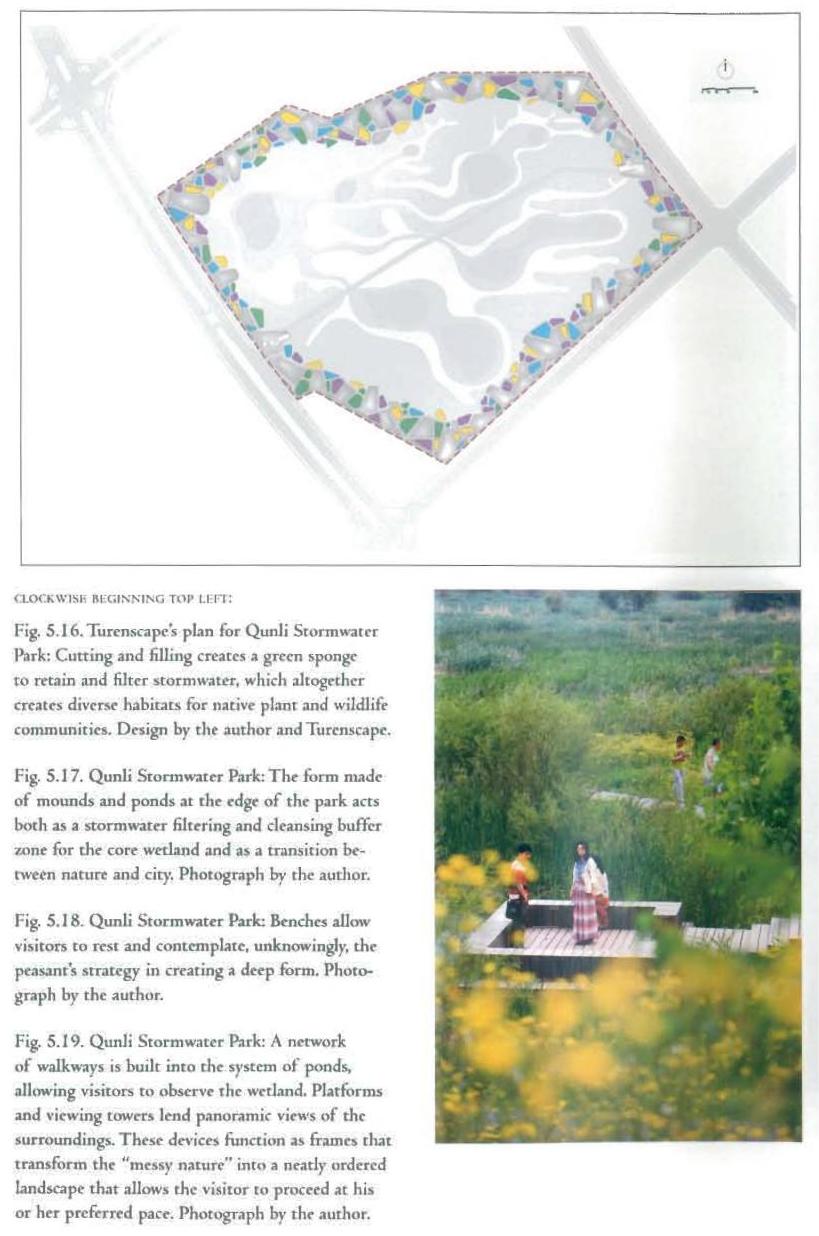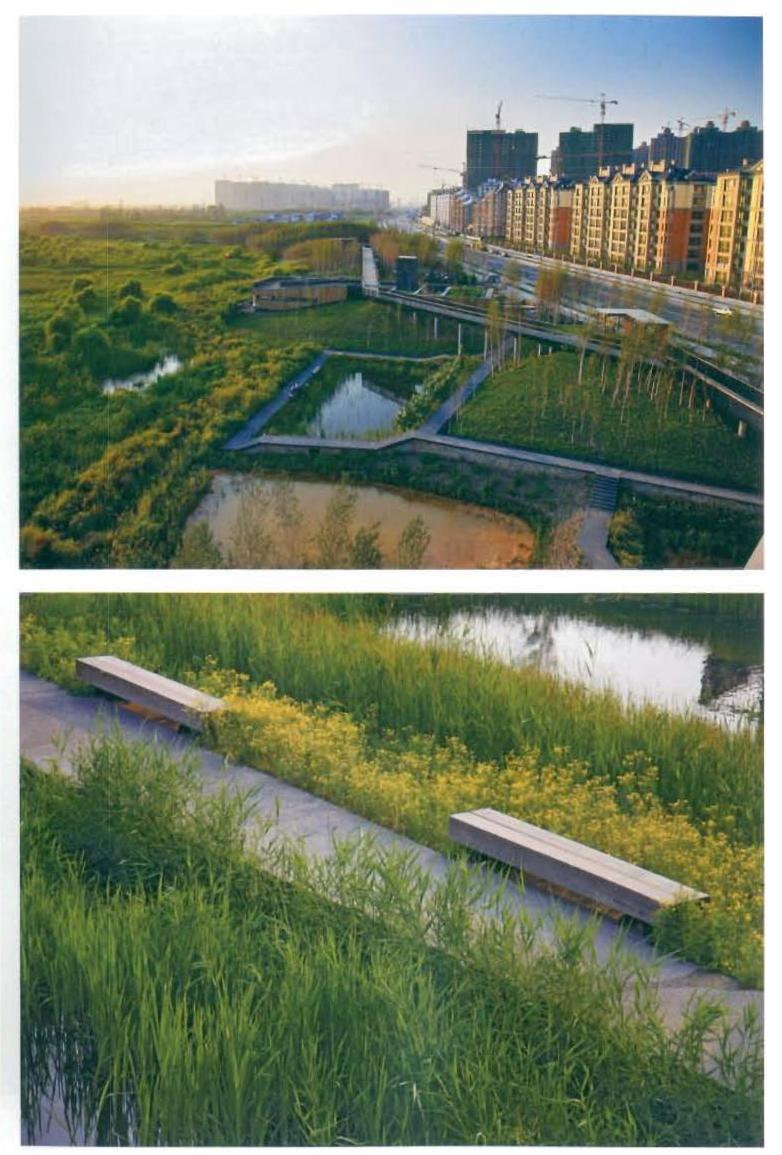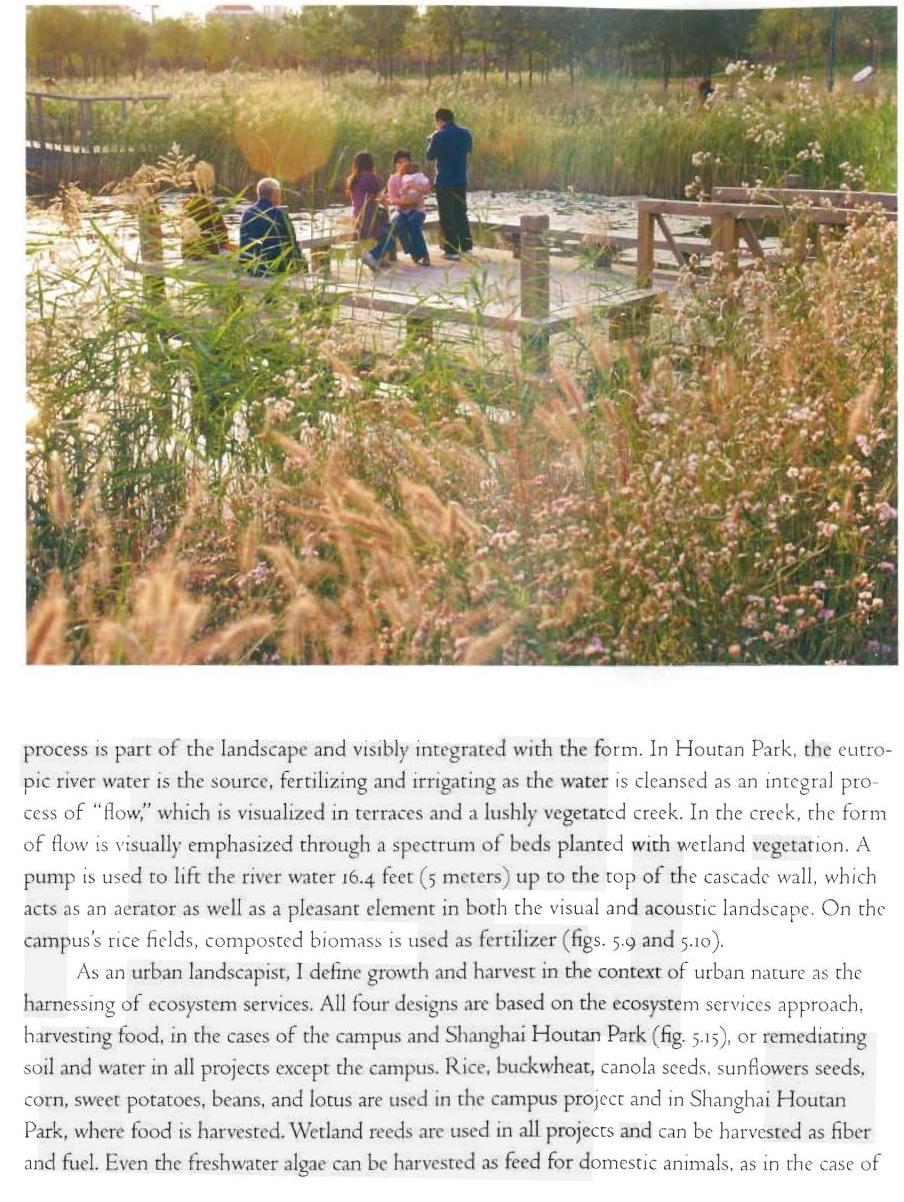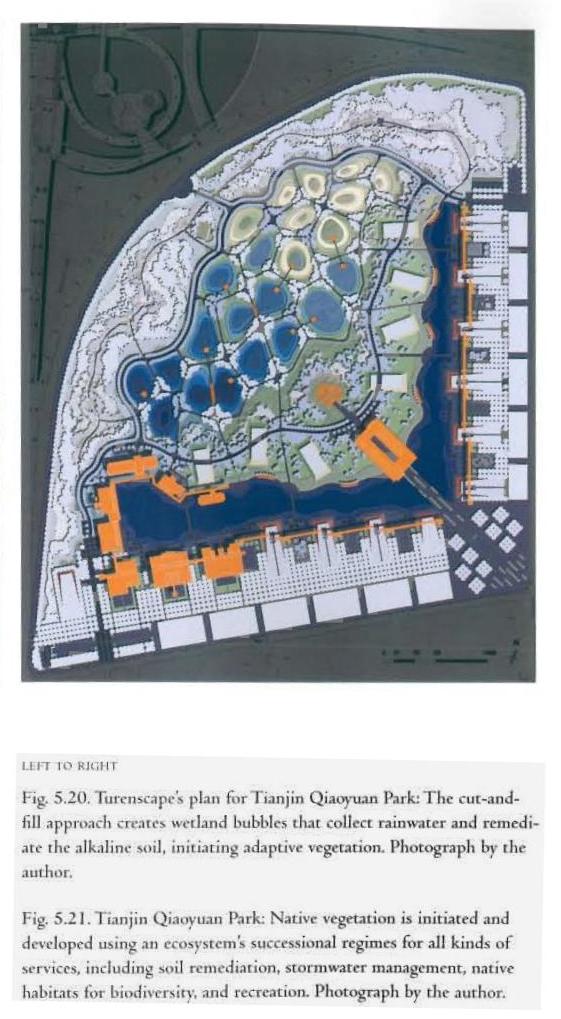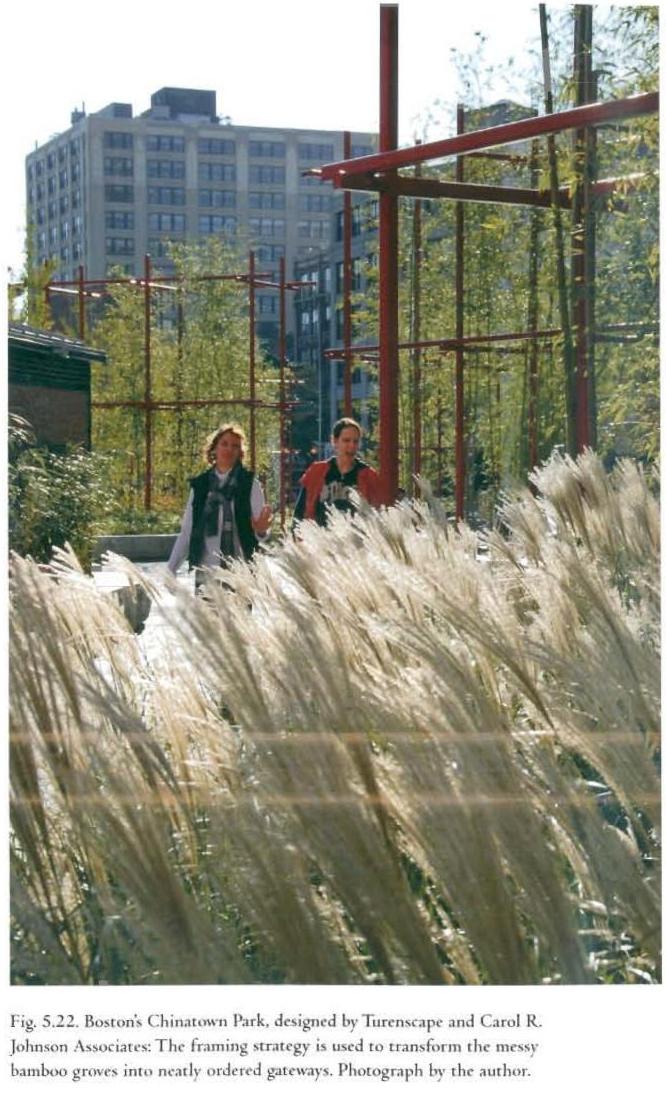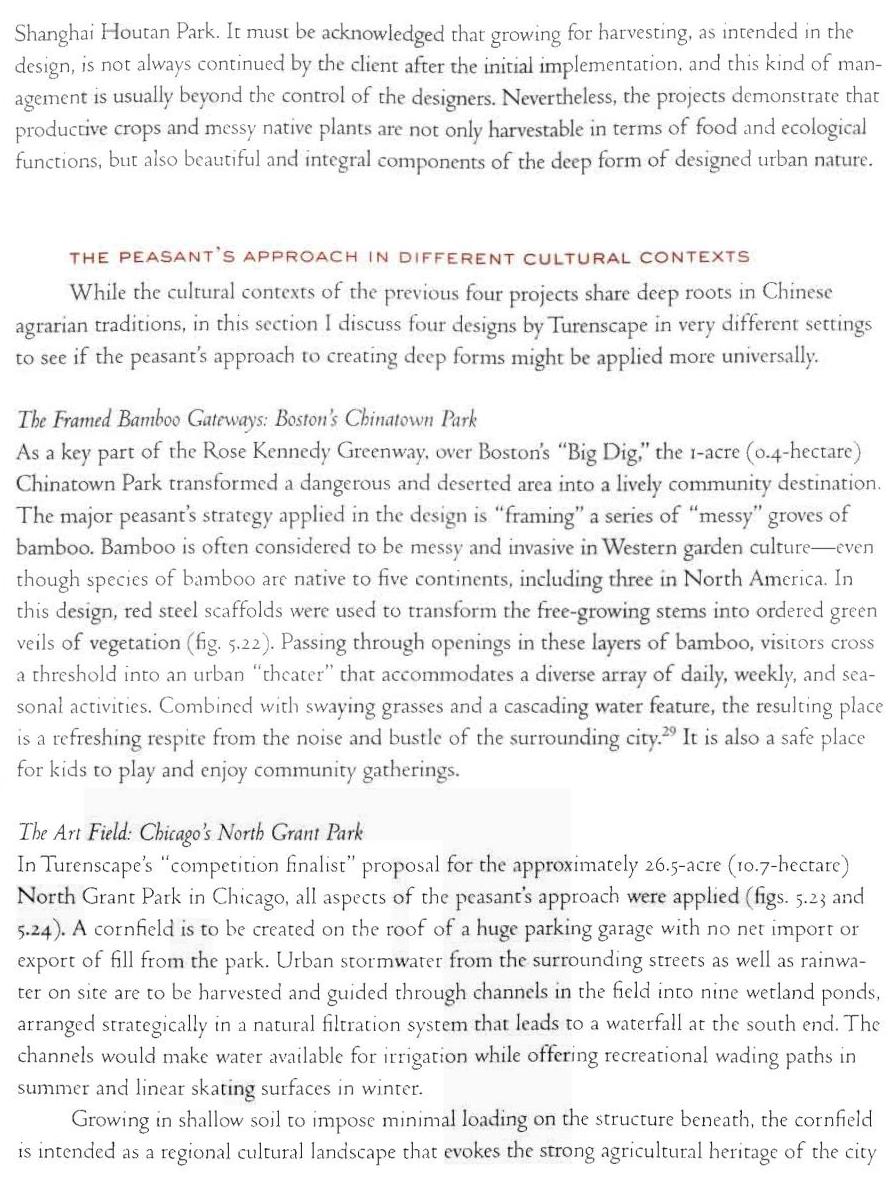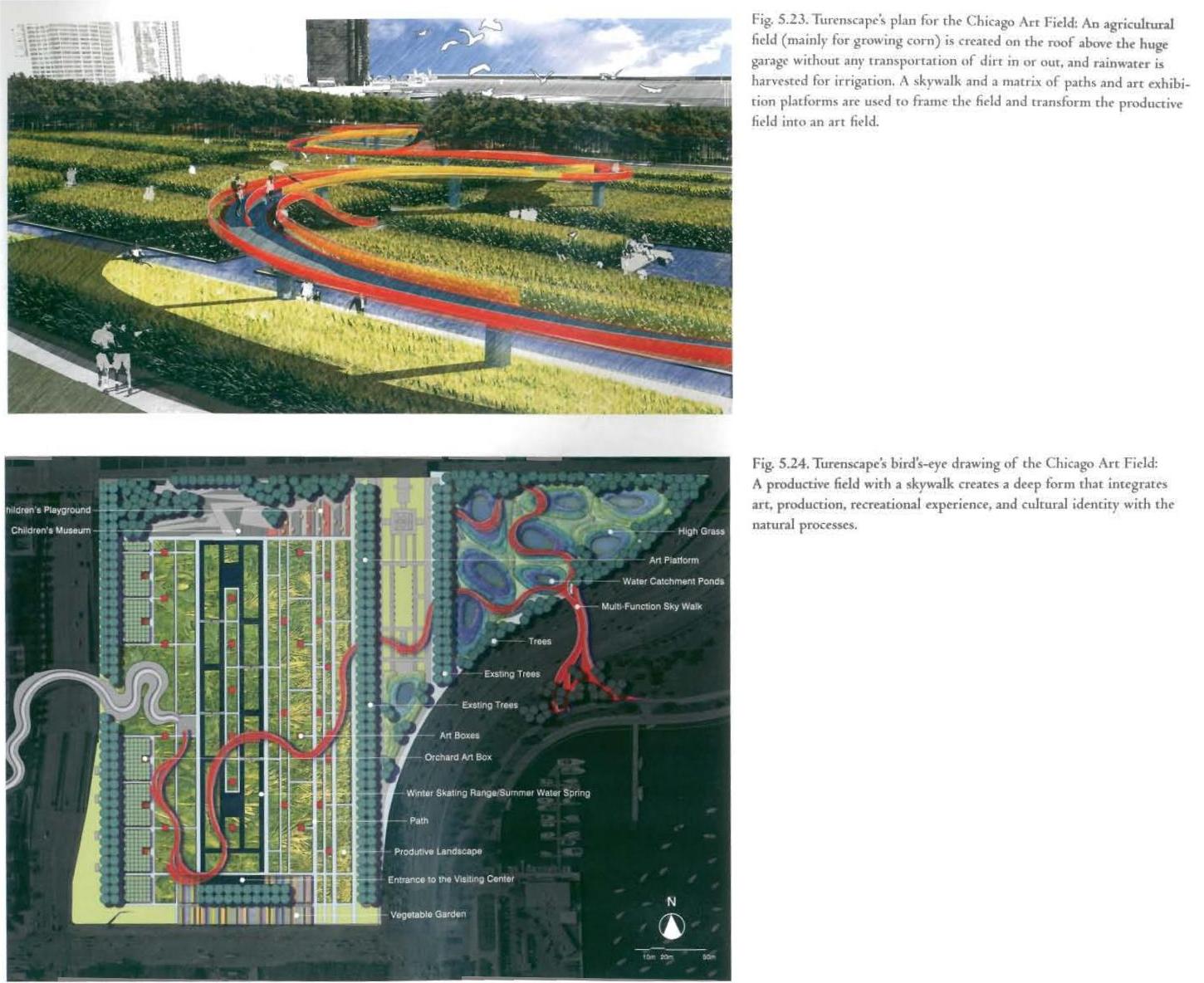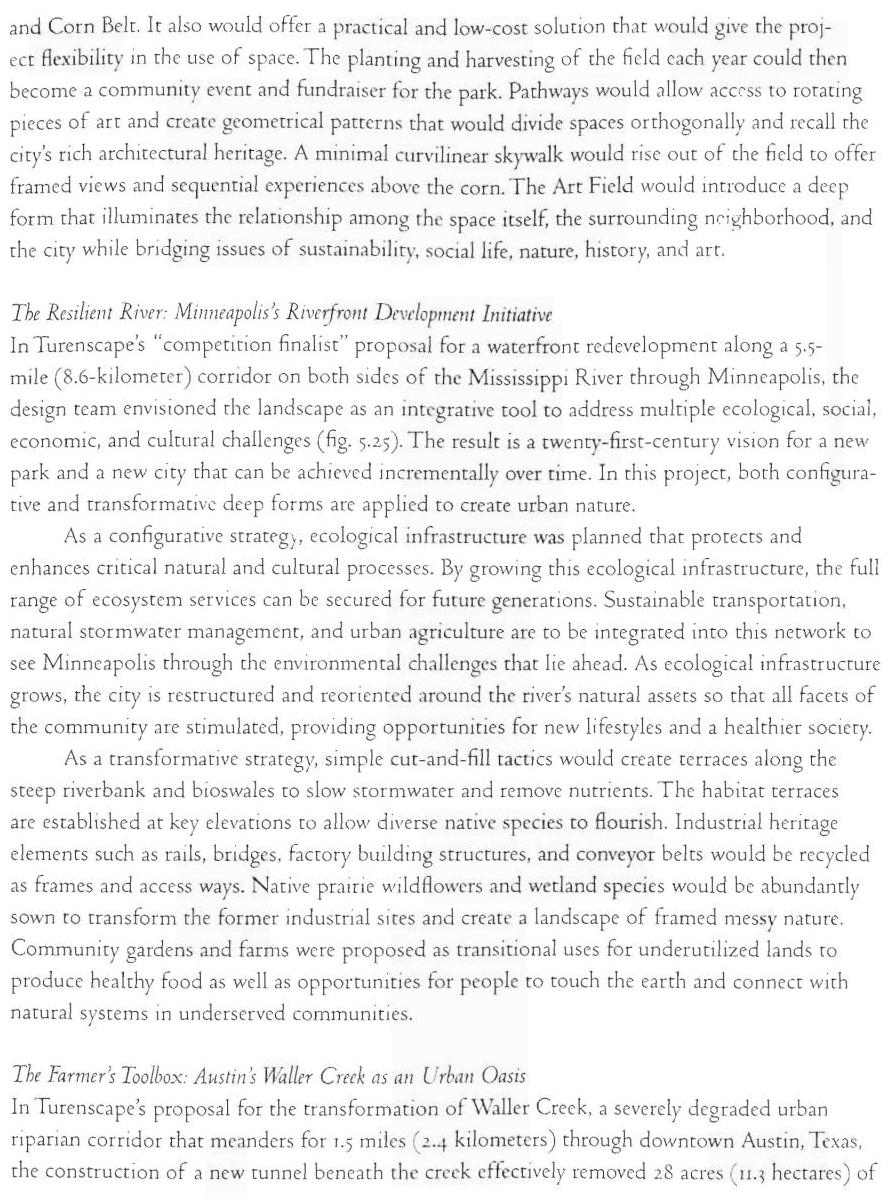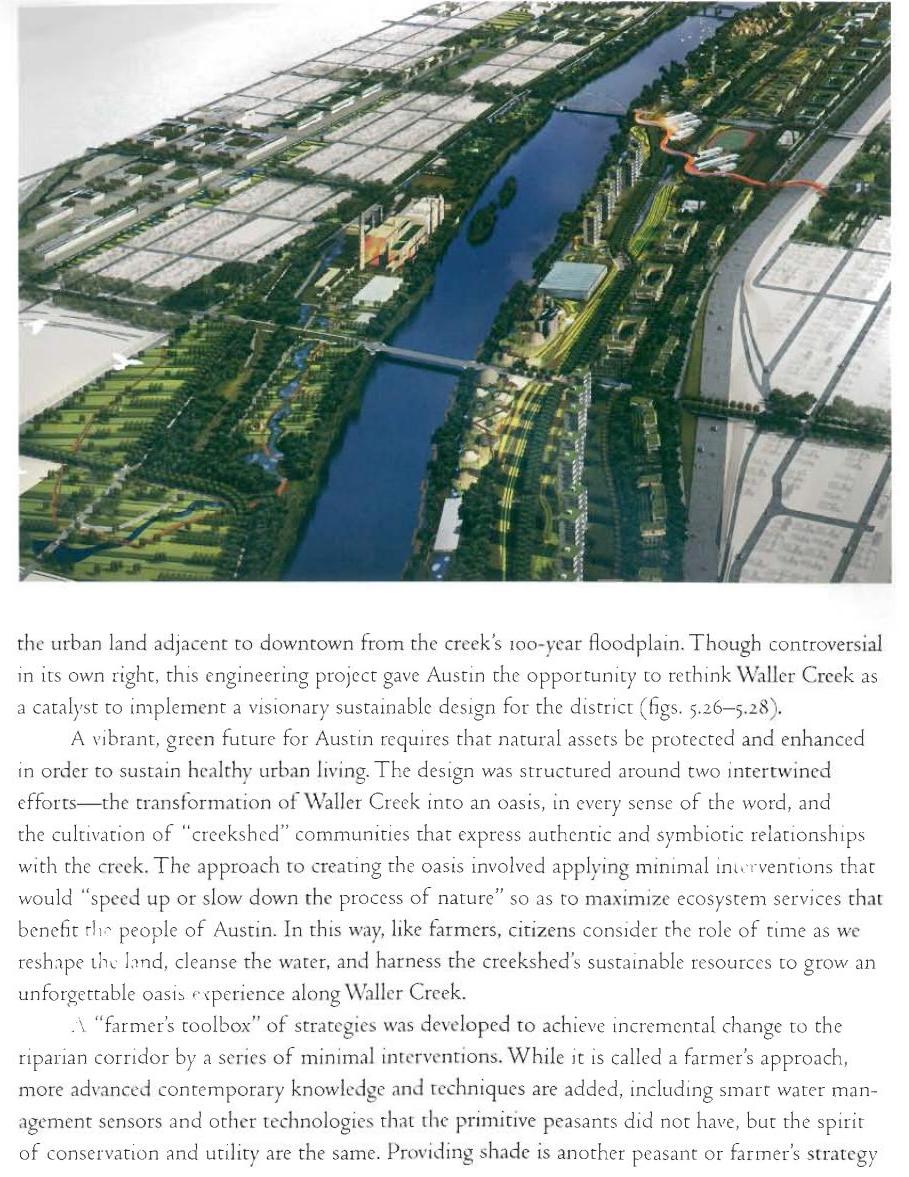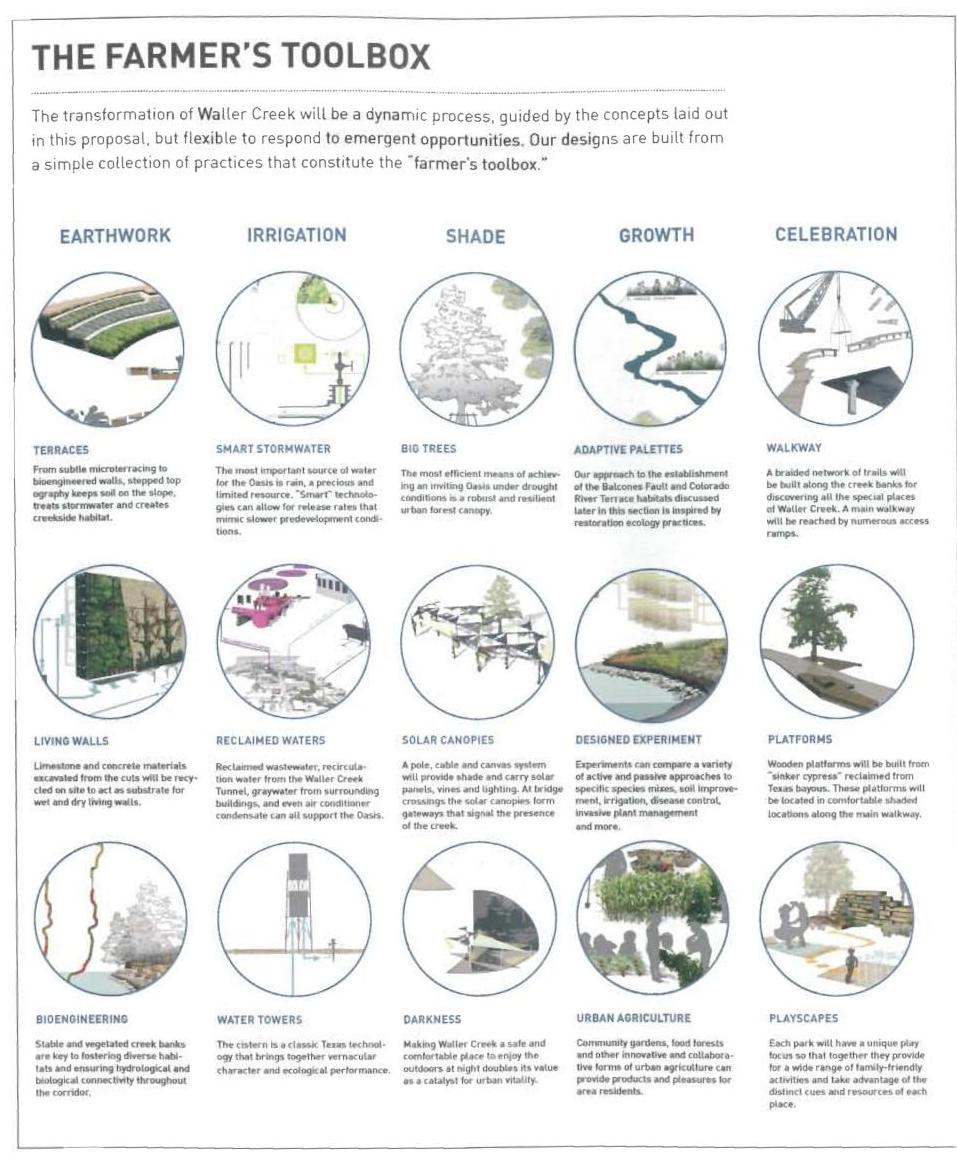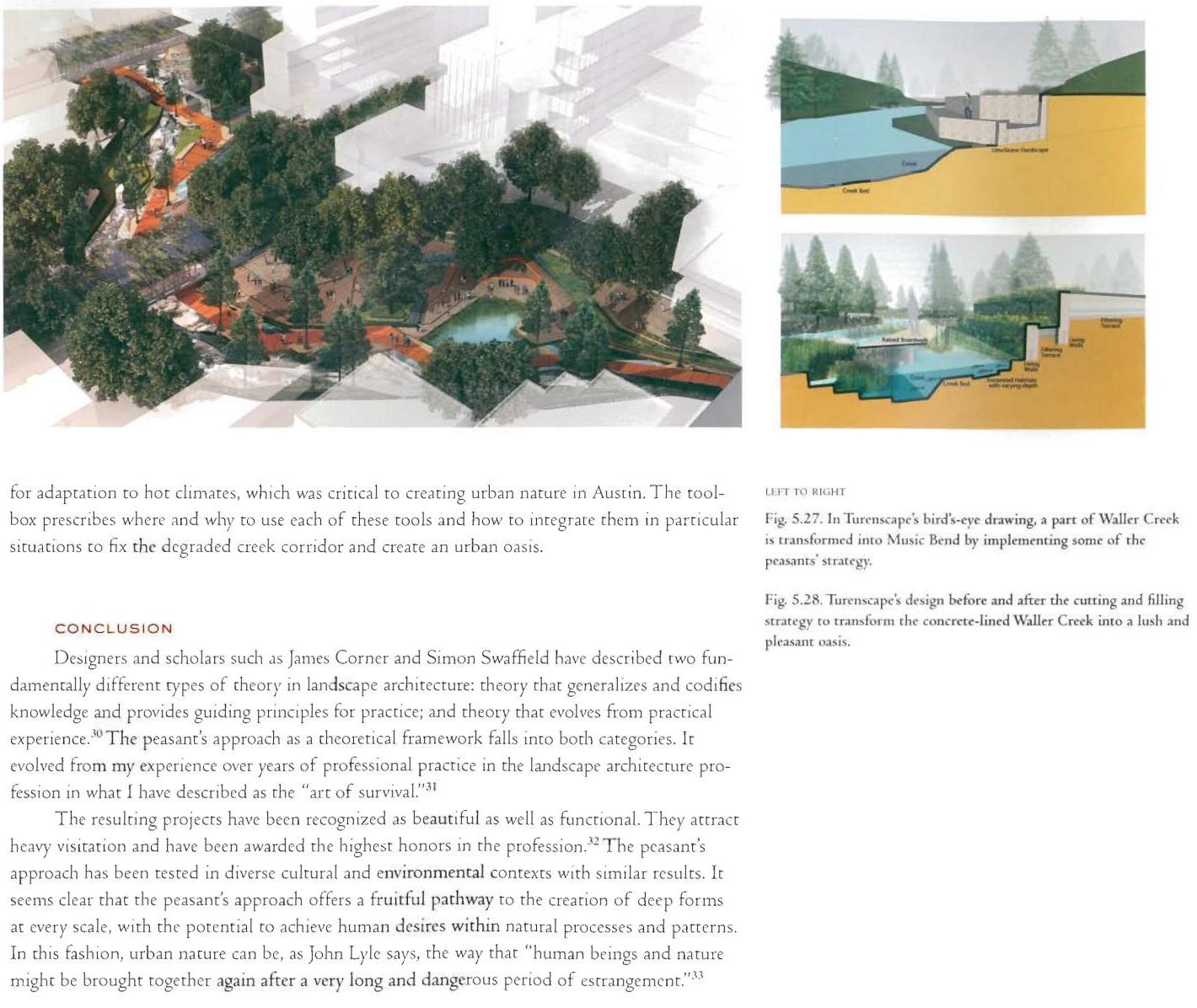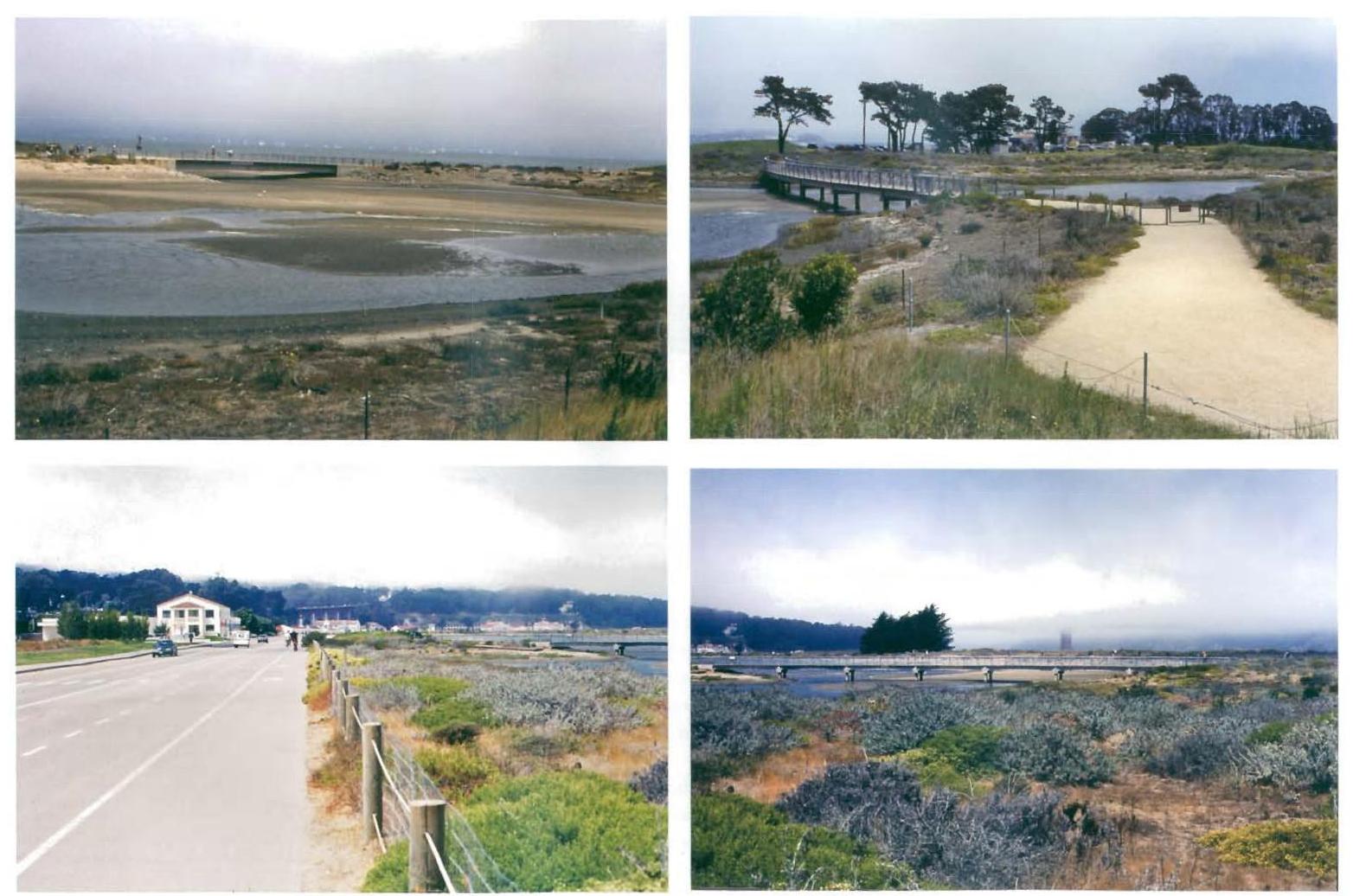Creating deep forms in urban nature: the peasant’s approach to urban design
2023-01-06
作者:Kongjian Yu
来源:Nature and Cities—The Ecological Imperative in Urban Design and Planning, Lincoln Institute of Land Policy, pp95-117
分享
- 摘要:
- REGARDLESS OF THE TYPE OF NATURE IN CITIES. from remnant wilds and agricultural fields to urban open space and postindustrial landscapes, urban nature needs to be designed to integrate human activities and natural processes as a harmonious whole, in what John Lyle termed "human ecosystems,"which embody"ecological order,including the whole physical, emotional, and cultural realm of humanity, in human terms."" According to Lyle,"a human eco-system has deep form because underlying its surface and giving it deeper substance is this cohe-sive fundamental order.Thus,deep form is shaped by the interactions of inner ecological process and human vision, which make the underlying order visible and meaningful in human terms. Such deep form stands in contrast to shallow form, which has only the superficial perceptual order and lacks the solidity of coherent process beneath the surface."In the sense of aesthetics of ecology and sustainability, such a deep forrn has a“sustainable beauty”and is the“shape of green."This is what Anne Whiston Spirn described as the New Aesthetics "that encompasses both nature and culture, that embodies function,sensory perception, and symbolic meaning, and that embraces both the making of things andplaces and the sensing, using, and contemplating of them.”
文章来源:Kongjian Yu, Creating deep forms in urban nature: the peasant’s approach to urban design, in Frederick R. Steiner, George F. Thompson and Armando Carbonell(Eds.)[M] Nature and Cities—The Ecological Imperative in Urban Design and Planning, Lincoln Institute of Land Policy, 2016: pp95-117
